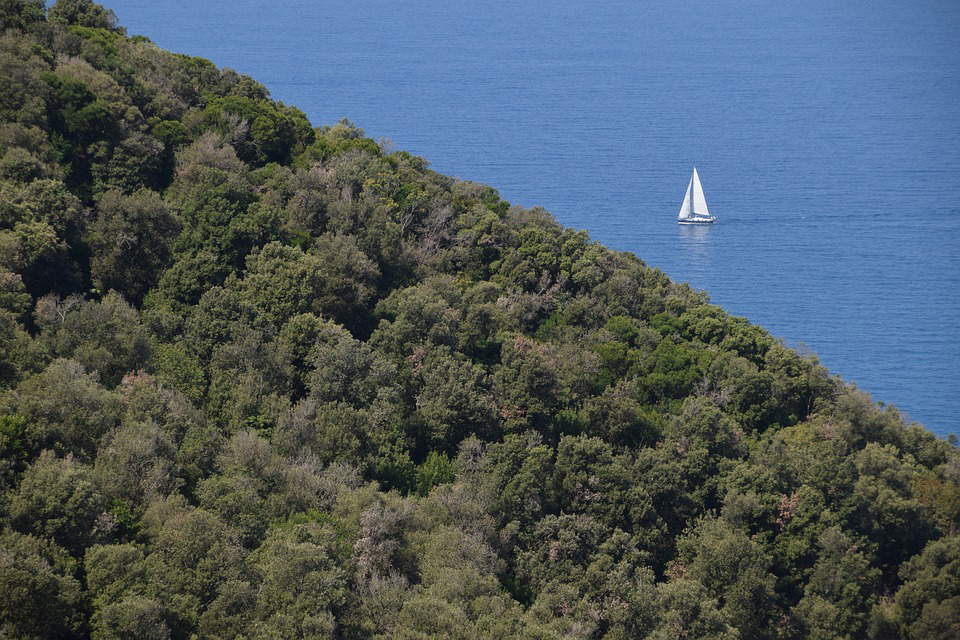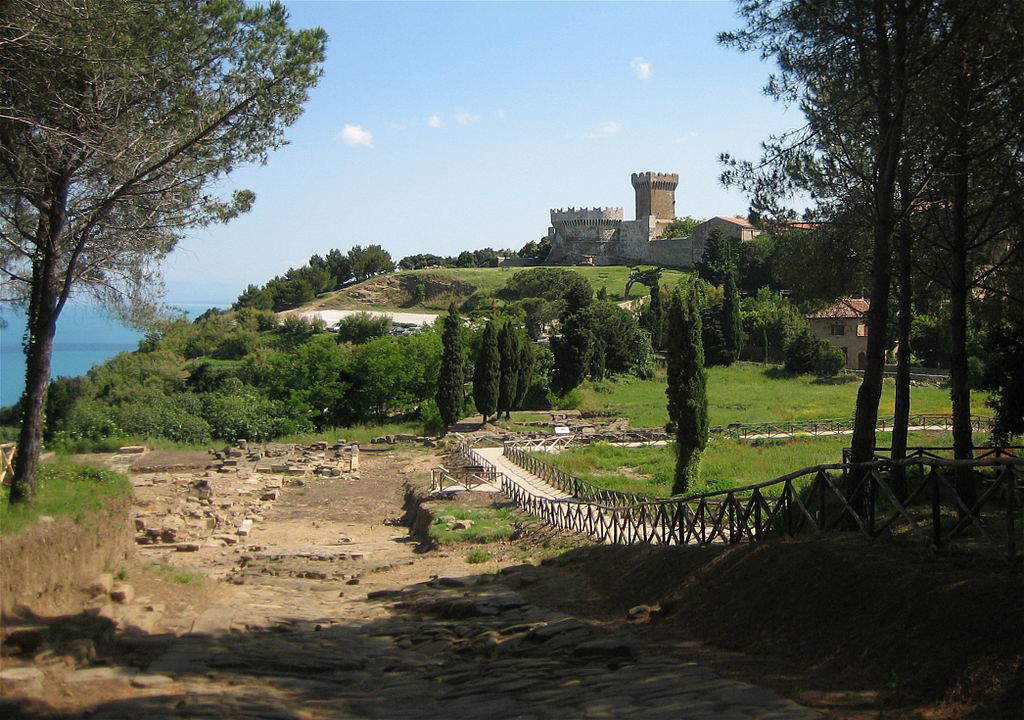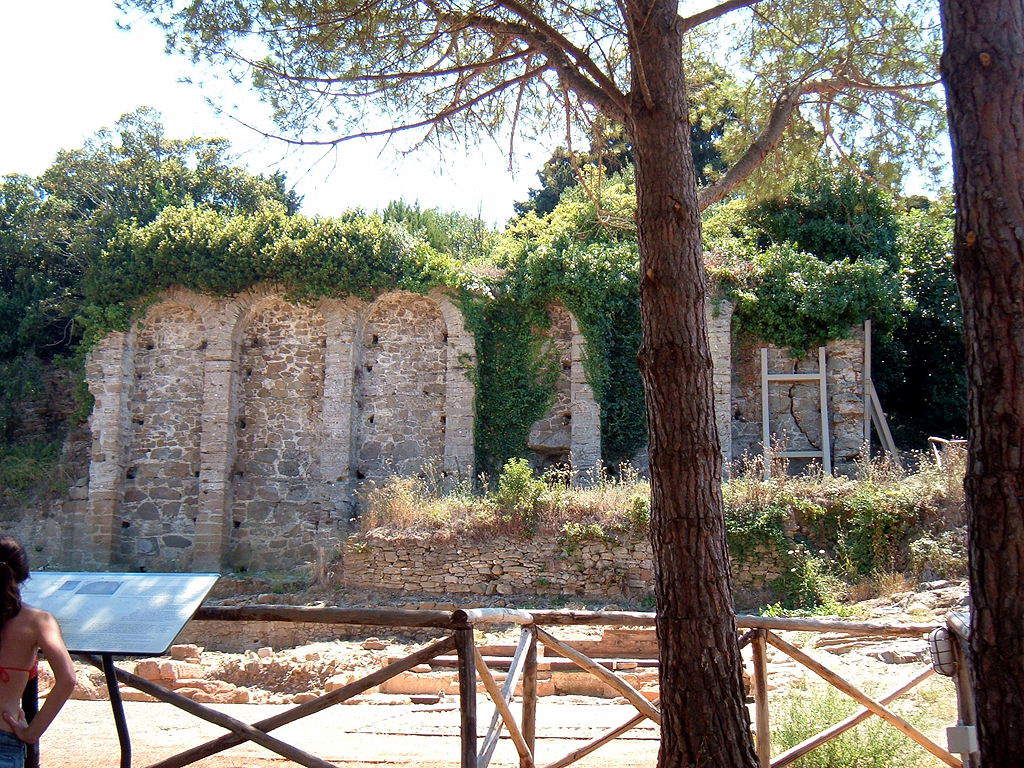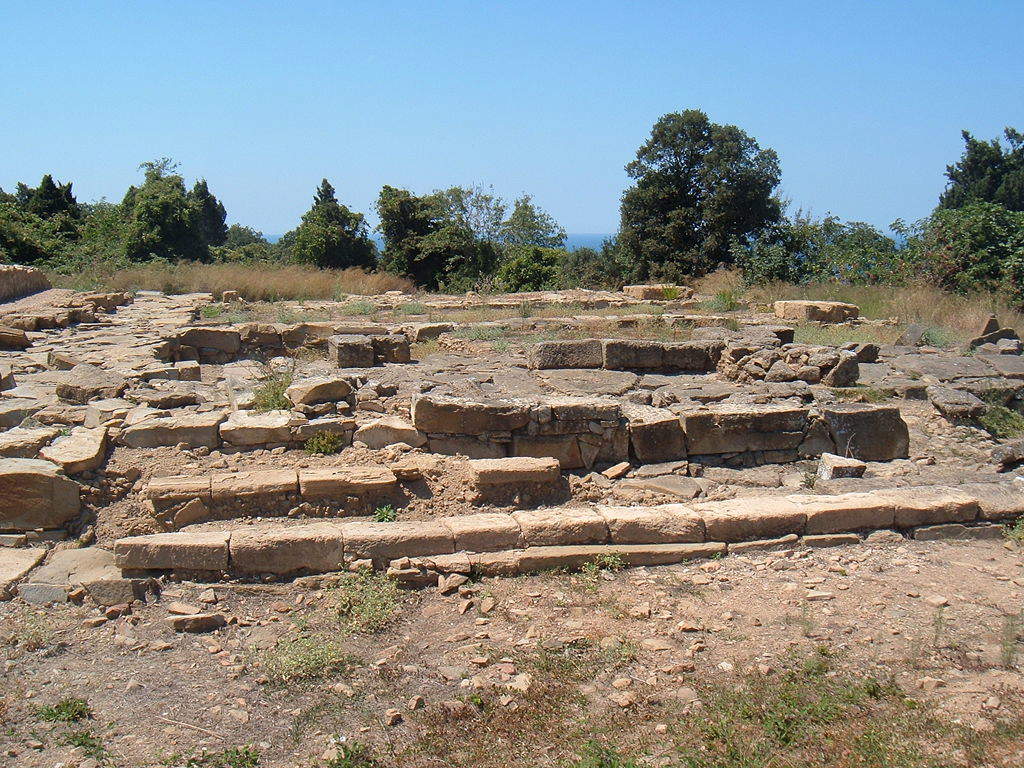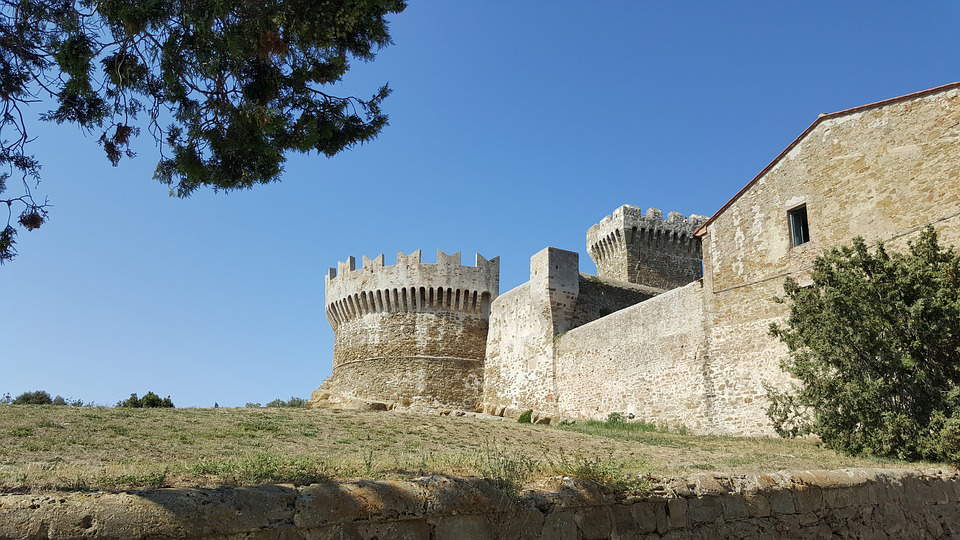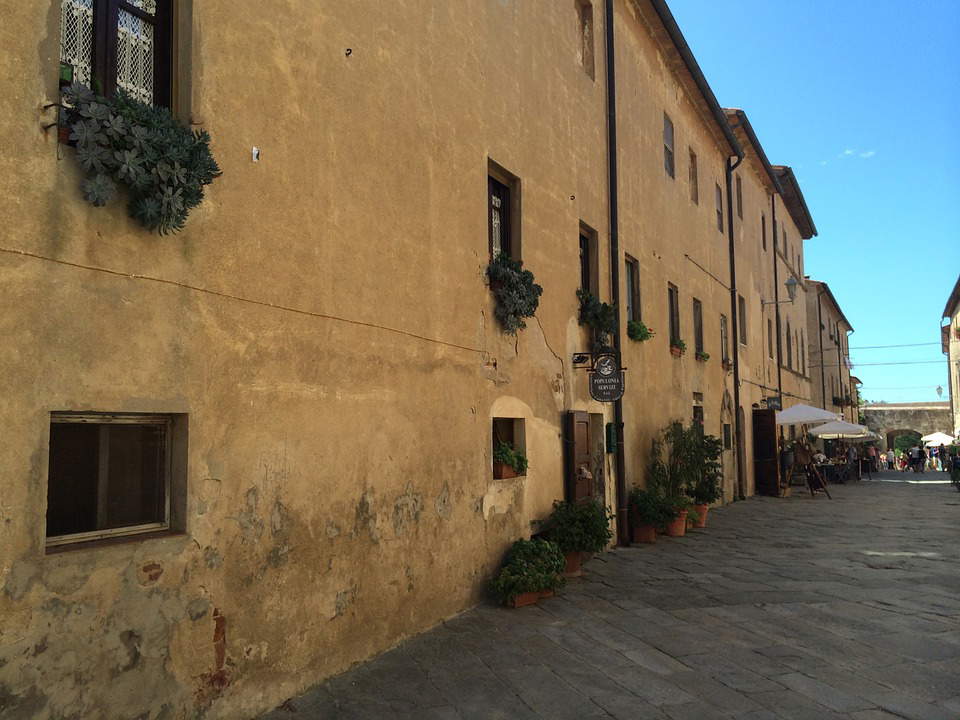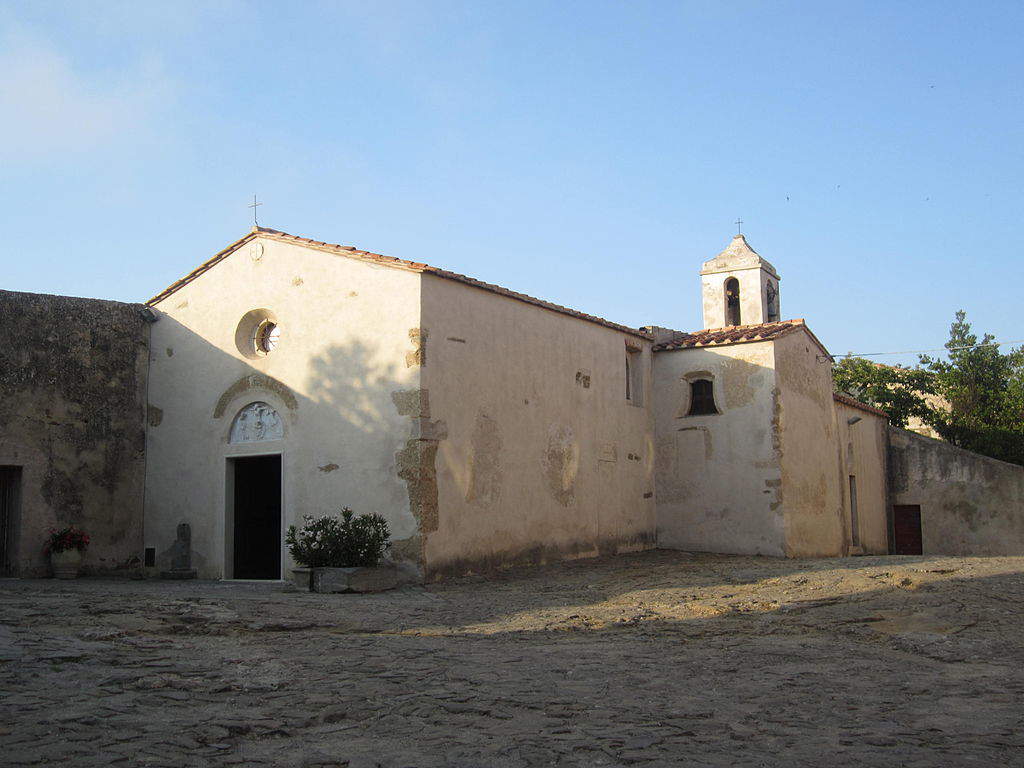by Redazione , published on 06/08/2020
Categories: Travel
/ Disclaimer
Populonia, a splendid village overlooking the Gulf of Baratti from above, was one of the most prosperous Etruscan cities. Fallen, it managed to be reborn.
In the common imagination, Populonia is linked to two strong, defining elements: the Etruscans and the landscapes. And it is true: Populonia was one of the largest, richest and most powerful cities of the Dodecapolis, flourishing thanks to its mining activities and the iron industry that developed there. And Populonia is nestled in one of our country’s most splendid scenic settings, the Gulf of Baratti. The most scenic way to get there is by skirting the pine forests of the coastal park of Rimigliano and then climbing up from Baratti: once up there, amidst passages of Mediterranean scrub that are almost intact, glimpses open up that are unparalleled, especially in summer, when the scent of the pines is intoxicating and is the first thing you notice when you decide to stop. Perhaps to admire the spectacle of a sunset over the sea from the top of the promontory.
Not everyone, however, may know that Populonia also had a second life. To get to it, however, it is first necessary to talk about the first one, that is, when it was a city with thousands of inhabitants, the main metallurgical center of Etruria, prosperous even in Roman times (the weapons with which the legionaries of Scipio Africanus defeated the Carthaginians came from Populonia), a busy port on the Tyrrhenian Sea (indeed: it was the only Etruscan city on the coast), protected by a high wall. At the time, it was called Fufluna (or Pupluna), and from the dislocation of the walled circle we can imagine that it had reached considerable size. Then, in the 3rd century B.C., the Romans arrived: the city changed its face, adapted to the uses of the conqueror (baths were built, for example, and temples dedicated to Roman deities were erected), but it began to lose its importance. The decline began a couple of centuries later, when Populonia allied itself with Marius in the war against Sulla: the outcome of the civil war was favorable to the latter, and we must imagine that Populonia was severely punished, since, from the writers of the time, we know of a city greatly downsized. In the course of the imperial age the town began to depopulate, and probably by the fifth century it had been almost completely abandoned.
 |
| View of Populonia |
 |
| Landscape from the promontory of Populonia |
 |
| One of the temples of the acropolis |
 |
| Etruscan tombs in the Archaeological Park of Baratti and Populonia. |
A writer of that time, Claudius Rutilius Namazianus, in one of his works entitled De reditu suo, an account of an autobiographical journey from Rome to Gaul, speaks of a Populonia where nothing is left but a tower and a lighthouse, “amid ruins and collapses that remind us of the fate of man.” The same ruins we admire today in the Archaeological Park of Baratti and Populonia. In the ’acropolis, the upper part, there remains the sacred street with its very ancient paving: around it, the remains of temples, the square, a domus, the area of the Loggias, a terracing where there were other buildings, including what is perhaps a sanctuary dedicated to the goddess Venus. And consider that, famous as it is, the acropolis of Populonia has only been partially excavated: it may be that in the future the site will hold more surprises. Lower down, however, lie the necropolis, where different types of Etruscan tombs are preserved, including tumuli, aedicule tombs, and sarcophagus tombs. They are the privileged way to learn about the customs and traditions of this ancient population.
It was said that Populonia had a second life. Indeed, it happens that despite centuries of decay and abandonment, a few inhabitants remained. The great and glorious Etruscan city is a kind of fishing village, but it continues to be attacked by Saracen pirates. The inhabitants can’t take it anymore and decide to move further south, to a more sheltered inlet: it is the ninth century, and the “refugees” from Populonia found “Populino,” the “little Populonia” that in the years to come would become Piombino, the main center of the area, first subject to Pisa and then, from 1399, the capital of an independent seigniory, that of the Appiani. The Appiani, enfranchised by Pisa, decided to breathe new life into Populonia, where there was nothing left: the very few presences flow between the Pisan watchtower built in the thirteenth century, and a Benedictine monastery dedicated to St. Quirico, built not far from the ancient acropolis. It is the beginning of the fifteenth century and the lord of Piombino, Jacopo II Appiani, promotes the construction of an imposing fortress around which a small village develops: three parallel streets where houses and stores spring up. This is the new 15th-century Populonia, the one that is still intact and that we admire today in its medieval charm.
 |
| View of Populonia among the pine trees |
 |
| The fortress of the Appiani |
 |
| A street in the village of Populonia |
 |
| The gulf of Baratti from Populonia. Ph. Credit Hermann Hammer |
 |
| Sunset among the pine trees. Ph. Credit Elly Loff |
Surrounding the main street, accessed by crossing the gateway to the village, are low, sober buildings. In a small square clinging to a hillside stands the fifteenth-century church of Santa Croce, also stark, single-naved, with a bare interior: inside there is only a fragment of a sixteenth-century fresco, no one knows whose it is. A fascinating hypothesis, though far from solid and long discarded by critics (already Enzo Carli, in 1979, spoke of “a rather crude leftover”), and which is therefore reported here as a note of color, wants it to be the work of Giovanni Antonio Bazzi, known as Sodoma, one of the most bizarre and eccentric painters in the entire history of art, who apparently was a great friend of Jacopo V Appiani and sometimes liked to stay in the village. From above, the great keep of the Appiani fortress still dominates 15th-century Populonia.
A second life, however, ephemeral, since the village would not experience further expansion. Only in the nineteenth century, with the development on the sea of the Via della Principessa, the new hamlet of Populonia Stazione would give a new vitality to the town: but this is already another era, far from the splendors of antiquity. To recall them, the Archaeological Park mentioned above was opened in 1998. But there is still so much to study about Populonia: and new research may add more dense pages to the history of one of Tuscany’s most fascinating villages.
Article written by the editorial staff of Finestre sull’Arte for UnicoopFirenze’s “Toscana da scoprire” campaign.
 |
| The two lives of Populonia, ancient land of iron |
Warning: the translation into English of the original Italian article was created using automatic tools.
We undertake to review all articles, but we do not guarantee the total absence of inaccuracies in the translation due to the program. You can
find the original by clicking on the ITA button. If you find any mistake,please contact us.

